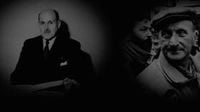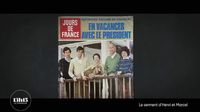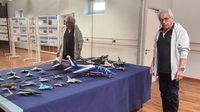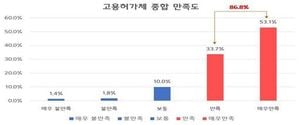Marcel Dassault, a prominent figure in the aviation industry, has left an indelible mark on the 20th century. Known for founding Dassault Aviation, his journey was fraught with challenges that shaped not only his career but also his character. An engineer by trade, Dassault served the French Air Force during both World Wars. However, his life took a dramatic turn after France's capitulation in 1940, leading to his imprisonment and eventual deportation to Buchenwald in August 1944 for refusing to collaborate with the Nazis.
Following his liberation, Dassault was determined to revive his aeronautics career. He went on to design some of France's first jet aircraft, including the Ouragan, Mystère, and the iconic Mirage. His contributions to aviation earned him recognition as one of the leading industrialists of the post-war era.
In addition to his industrial achievements, Dassault had a significant political career, serving as a senator and deputy for Oise from 1957 to 1986. His political involvement was closely tied to his business ventures. In 1954, he established the journal Semaine de France, later renamed Jours de France, to support the Gaullist agenda. The magazine quickly gained popularity, boasting a circulation of 750,000 copies, and became a competitor to Paris Match.
Bernard Tiélès, a political journalist for the publication, revealed a clever strategy employed by Dassault to boost sales: "He had a brilliant idea: he subscribed all the dentists and doctors in France for free, which meant we had a huge readership, and since advertising was sold based on readership numbers, everything went well." This tactic significantly increased the magazine's visibility and influence.
Jours de France aimed for a broad appeal, and Dassault instructed his team to maintain a neutral tone. Catherine Nay, another journalist at the magazine, recounted Dassault's directives during the presidency of Valéry Giscard d’Estaing: "He told me, 'Be nice to the right, but don’t be unpleasant to the left.' When Mitterrand and the left came to power in 1981, he reversed that advice, saying, 'Now you will do the opposite.'"
While Dassault had the final say on articles and topics, he allowed his staff considerable freedom, albeit with strict rules regarding appearance. He prohibited the color green, beards, and women wearing pants—an indication of his conservative values, which extended even to the presidential family.
A notable incident occurred in 1980 when Dassault censored a family photo of President Giscard d’Estaing during a vacation in Courchevel. The image, which included the president's daughter wearing a short sweater, was deemed inappropriate by Dassault. He famously cut her out of the picture before it was published, resulting in a cover featuring only three of the four children.
This anecdote reflects not only Dassault's stringent editorial standards but also his deep-seated desire to maintain a certain image for public figures.
In a parallel narrative, a recent documentary by Florent Muller, Frédéric Capron, and Matthieu Parmentier explores the unlikely connection between Dassault and Henri Krasucki, a communist trade unionist. The two men met in Buchenwald in 1944, where they forged a bond despite their differing backgrounds and ideologies. At the time, Krasucki was just 19, while Dassault was 52.
Both men shared the traumatic experience of being targeted due to their Jewish heritage and vowed to combat hatred for the rest of their lives. The documentary highlights their intertwined histories, showcasing the role of communists in the resistance against Nazi oppression.
Marcel Bloch, who later adopted the name Dassault in honor of his brother, was known for his innovative engineering. He had secretly aided the Spanish Republicans during the Civil War by supplying them with bombers. In contrast, Henri Krasucki, a Polish Jew, was a dedicated communist and resistance fighter who faced the horrors of Auschwitz before being transferred to Buchenwald.
Thierry Dassault, Marcel's grandson, recounts how his grandfather's life was saved by aligning with French communists during their time in the camp. "For the first call, he was in the front row. Someone pulled him back. The entire front row was shot, and he was saved," he shared. This bond forged in the depths of despair would last a lifetime, with Dassault expressing gratitude to the communists who helped him survive.
The documentary also features poignant testimonies from family members and historians, shedding light on the personal and political ramifications of their experiences. Brigitte, Krasucki's daughter, reminisces about how her father and grandmother measured their lives not in years but in the "rabiot" or surplus of life they gained after surviving the camps: "We didn’t have forty years, but twenty years of rabiot, compared to Auschwitz," she recalls.
In a recent speech at the National Assembly, Stéphane Peu, a communist deputy from Seine-Saint-Denis, emphasized the sacrifices made by the PCF in their fight against Nazism, linking it to the themes explored in the documentary. He remarked, "The PCF paid a heavy price for its commitment against the Nazis during World War II."
As part of the ongoing recognition of Dassault's legacy, an exhibition titled "Dassault, His Achievements" is being held by Fondett’Ailes on April 12 and 13, 2025. This exhibition aims to educate the public about the significant contributions of Marcel Dassault to the aviation industry, showcasing models, technical documentation, and film footage that chronicle the evolution of military aviation in France.
The exhibition also highlights the dramatic growth of the French aeronautical industry, which saw its workforce expand from 5,000 to 250,000 between 1920 and 1940. This growth was spurred by the French government's rearmament policies in response to the rising threat from Nazi Germany.
Marcel Bloch's refusal to collaborate with the Third Reich ultimately led to his deportation as a political hostage. After his liberation, he adopted the name Dassault, which translates to "assault tank," in honor of his brother's resistance efforts. His company would later become the primary supplier for the French Air Force, solidifying his legacy in the annals of aviation history.
Marcel Dassault's life story is a testament to resilience and innovation in the face of adversity. His contributions to aviation and his complex relationships with political ideologies continue to resonate today, reminding us of the importance of standing against hatred and oppression.






